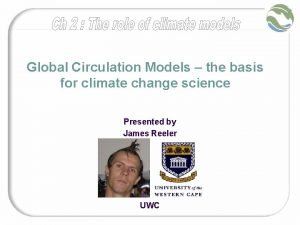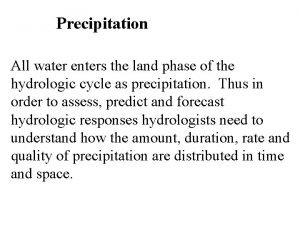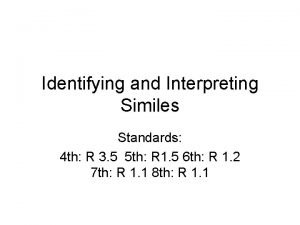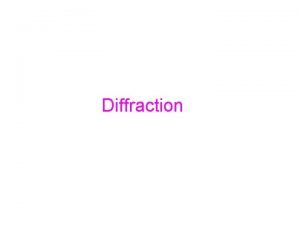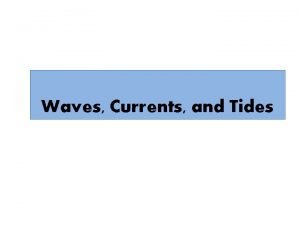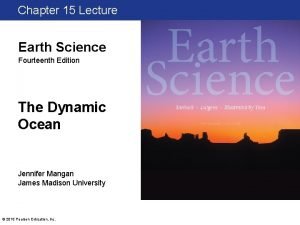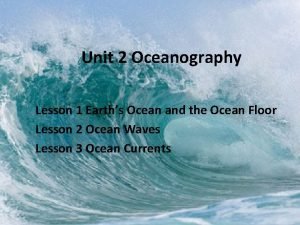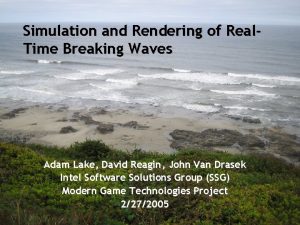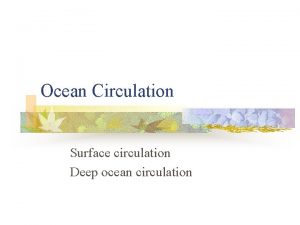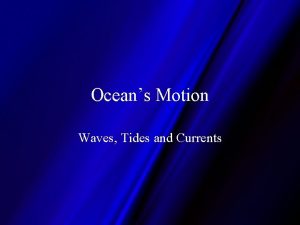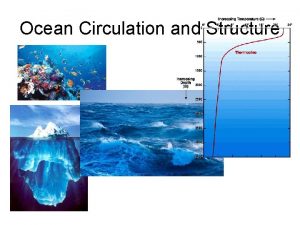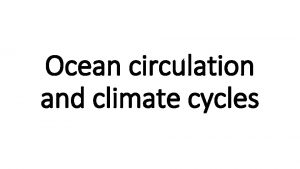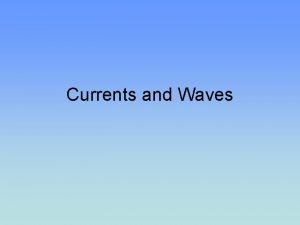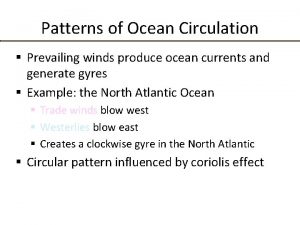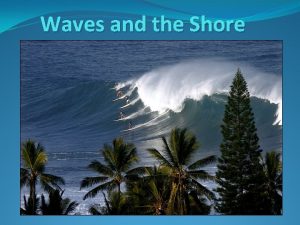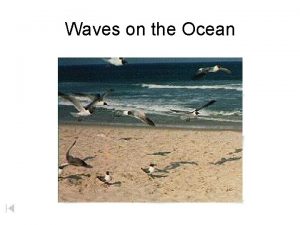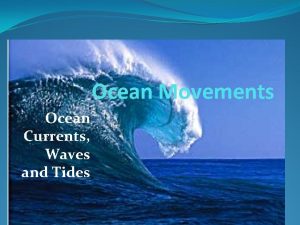Oceans Part II Circulation Patterns Waves Ocean Circulation





















- Slides: 21

Oceans – Part II Circulation Patterns Waves

Ocean Circulation

Surface Circulation Patterns • Gyre Formation – Water tends to pile up in the direction the wind is blowing – Water pressure is higher in the “piled up” area – Gravity pulls water down slope – Creates huge, slowly moving gyres

Surface Circulation Patterns • Five main gyres 1. 2. 3. 4. 5.

Surface Circulation Patterns • Deflected by the Coriolis effect – To the right in the Northern Hemisphere – To the left in the Southern Hemisphere

Surface Circulation Patterns • Four main currents exist within each gyre – A Western Boundary Current – An Eastern Boundary Current – Two Transverse Currents

Surface Circulation Patterns • Western boundary currents – Narrow, fast and deep – Move warm water poleward – Well defined boundaries – Can create features like eddies – Little to no coastal upwelling – nutrient poor • Eastern boundary currents – Slow, shallow and broad – Carry cold water to the Equator – Poorly defined boundaries – Tend not to form eddies – Upwelling common – nutrient rich

Currents Within Gyres © 2002 Brooks/Cole, a division of Thomson Learning, Inc.

Surface Circulation Patterns • Effects of Surface Circulation – Climate • Warm water currents bring warm, humid air to higher latitudes • Cold water currents bring cool, arid air to lower latitudes • Moderates global temperatures

Surface Circulation Patterns • Effects of Surface Circulation – Climate – Wind-induced vertical circulation • Upwelling is the upward motion of water. – This motion brings cold, nutrient rich water towards the surface. • Downwelling is downward motion of water. – It supplies the deeper ocean with dissolved gases.

Deep-ocean Circulation Patterns • Formation – A response to density differences – Factors creating a dense mass of water • Temperature—Cold water is dense • Salinity—Density increases with increasing salinity – Called thermohaline circulation


Waves

Waves • Wave anatomy Note that the water molecules in the crest of the wave move in the same direction as the wave, but molecules in the trough move in the opposite direction.

Waves • Energy transferred from one water particle to another in orbits – Causes the wave form to move – Called orbital wave – Occur between two fluid media – Progressive waves – waveform moves forward

Waves • Wavelength determines the size of the orbits • Water depth determines the shape of the orbits • Two broad categories – Deep-water Waves – Shallow-water Waves

Waves • Deep-water Waves – Waves moving through water deeper than half their wavelength ( )

Waves • Shallow-water Waves – Water molecule orbits “flatten” as they get close to the bottom – Water above seafloor cannot move in a circular path – Waves in water 1/20 th their are shallow-water waves

Waves Wind Waves Approaching a Shore 1. Wave train moves towards shore 2. Circular motion of water molecules is interrupted 3. Wave slows as water becomes more shallow 4. Wave becomes too high for its wavelength 5. Water now moving faster than the wave 6. Wave breaks 7. Forms the surf


End
 Single vs double circulatory system
Single vs double circulatory system Single circulation and double circulation
Single circulation and double circulation Types of alveoli
Types of alveoli Slowing atlantic ocean circulation
Slowing atlantic ocean circulation Circulation patterns interior design
Circulation patterns interior design Global circulation patterns
Global circulation patterns Convergent continental continental features
Convergent continental continental features Ocean ocean convergent boundary
Ocean ocean convergent boundary Convergent plate boundaries
Convergent plate boundaries Ocean ocean convergent boundary
Ocean ocean convergent boundary Chapter 15 ocean water and ocean life wordwise answer key
Chapter 15 ocean water and ocean life wordwise answer key What type of boundary is the andes mountains
What type of boundary is the andes mountains Ocean to ocean convergent boundary
Ocean to ocean convergent boundary Red and blue ocean strategy
Red and blue ocean strategy Citlalli dominguez
Citlalli dominguez Beach simile
Beach simile The phenomenon of diffraction can be understood using *
The phenomenon of diffraction can be understood using * Study jams waves
Study jams waves Ocean waves
Ocean waves Ocean waves
Ocean waves Breaking waves
Breaking waves What waves do not require a medium
What waves do not require a medium



